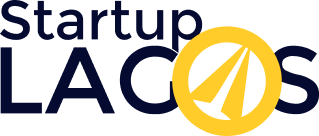In today's fast-paced tech landscape, the ability to adapt quickly to changing requirements and deliver products efficiently is crucial. Adopting an agile workflow can significantly enhance productivity and flexibility for development teams. This guide provides a step-by-step approach to implementing agile methodologies, ensuring that teams are well-equipped to respond to market demands while delivering high-quality software.
1. Understand the Agile Principles
Before transitioning to an agile workflow, it is essential to grasp the core principles of agile methodologies. At the heart of agile is the Agile Manifesto, which emphasizes:
• Individuals and interactions over processes and tools
• Working software over comprehensive documentation
• Customer collaboration over contract negotiation
• Responding to change over following a plan
Understanding these principles will serve as a foundation for creating a successful agile environment.
2. Choose the Right Agile Framework
Various agile frameworks cater to different project needs. The most common include:
• Scrum: Focuses on iterative progress through sprints, allowing teams to deliver increments of work within fixed timeframes.
• Kanban: Visualizes work items on a board, emphasizing flow and continuous delivery.
• Extreme Programming (XP): Enhances software quality through frequent releases, continuous integration, and rigorous testing.
Evaluate the specific needs of your team and project to select the framework that aligns best with your goals.
3. Build Cross-Functional Teams
Agile teams thrive on collaboration and a diverse skill set. Form cross-functional teams that include developers, testers, designers, and product owners. This structure ensures that all perspectives are considered throughout the development process, fostering creativity and innovation.
4. Define Roles and Responsibilities
Clearly delineate roles within the agile framework to enhance accountability and streamline workflows. Key roles typically include:
• Product Owner: Represents stakeholders and is responsible for defining project goals and prioritizing the backlog.
• Scrum Master (if using Scrum): Facilitates the agile process, removes obstacles for the team, and ensures adherence to agile principles.
• Development Team: Comprises professionals with various skill sets focused on delivering high-quality software.
Defining these roles helps streamline communication and improves team dynamics.
5. Establish an Agile Backlog
The agile backlog is a dynamic list of tasks, features, and improvements prioritized based on business value and stakeholder feedback. Collaboratively create the backlog with input from all team members, ensuring that priorities align with overall project goals. Regularly review and refine the backlog to reflect changes in project scope and market needs.
6. Implement Short Iterations
Break work into short iterations or sprints, typically one to four weeks long, during which specific features or tasks are completed. At the end of each iteration, conduct a review and retrospective to assess progress, gather feedback, and identify areas for improvement. This iterative approach promotes continuous learning and adaptability.
7. Foster Open Communication and Collaboration
Encourage a culture of transparency and open communication among team members. Daily stand-up meetings provide a forum for team members to discuss progress, challenges, and next steps. Utilize collaboration tools such as Slack, Trello, or JIRA to maintain visibility and facilitate communication.
8. Embrace Continuous Integration and Delivery
Incorporate continuous integration (CI) and continuous delivery (CD) practices into your agile workflow. CI ensures that code changes are automatically tested and integrated into the main codebase, reducing integration problems. CD automates the delivery process, enabling teams to release software more frequently and reliably.
9. Monitor Progress and Measure Success
Establish key performance indicators (KPIs) to measure the success of your agile workflow. Metrics such as velocity, lead time, and customer satisfaction can provide valuable insights into team performance and project outcomes. Regularly assess these metrics to identify trends and areas for improvement.
10. Adapt and Evolve
Agile is not a one-size-fits-all approach; it is essential to remain flexible and open to changes based on team feedback and project demands. Continuously evaluate the effectiveness of your agile workflow, and make adjustments as necessary to enhance productivity and team dynamics.
Conclusion
Setting up an agile workflow for development teams can significantly boost productivity and adaptability in tech projects. By understanding agile principles, selecting the appropriate framework, fostering collaboration, and continuously improving processes, organizations can create a responsive and efficient development environment that meets the evolving needs of the market.
Play audio
Comments
Add your comment
Categories
Startup Raises
262
Feature
83
Fintech
39
Fresh News
696
How To
84
Acquisition
39
Reports
22
Opinion
57
Recent Posts
Meet the Founder Who Turned Down $1.5 Million and Built One of Africa’s Fastest-Growing Companies Two Years in a Row
Most startups pursue large funding rounds to accel...
FG Targets 35 Million Disabled Nigerians in Digital Inclusion Drive
The Nigerian Federal Government has made a promisi...
How Banks and Fintechs Determine Creditworthiness
Banks and fintech companies in Nigeria are adoptin...
Metrospeed and Chevron Partner to Drive Lagos Metro Smart City Development
Metrospeed Property Development Limited has announ...
Beware: Tria Stealer malware is targeting Android users’ WhatsApp and banking apps
There has been an alarming rise in sophisticated c...
Related Post
How to Utilize Data-Driven Decision Making in Your Startup
In the rapidly evolving landscape of modern business, relying solely on intuitio...
How to Conduct Effective A/B Testing for Your Tech Products
In the competitive world of tech products, data-driven decisions often make the...
How to Create a Product Roadmap That Aligns with Your Vision
A well-crafted product roadmap is the strategic blueprint that guides your team...








No comments